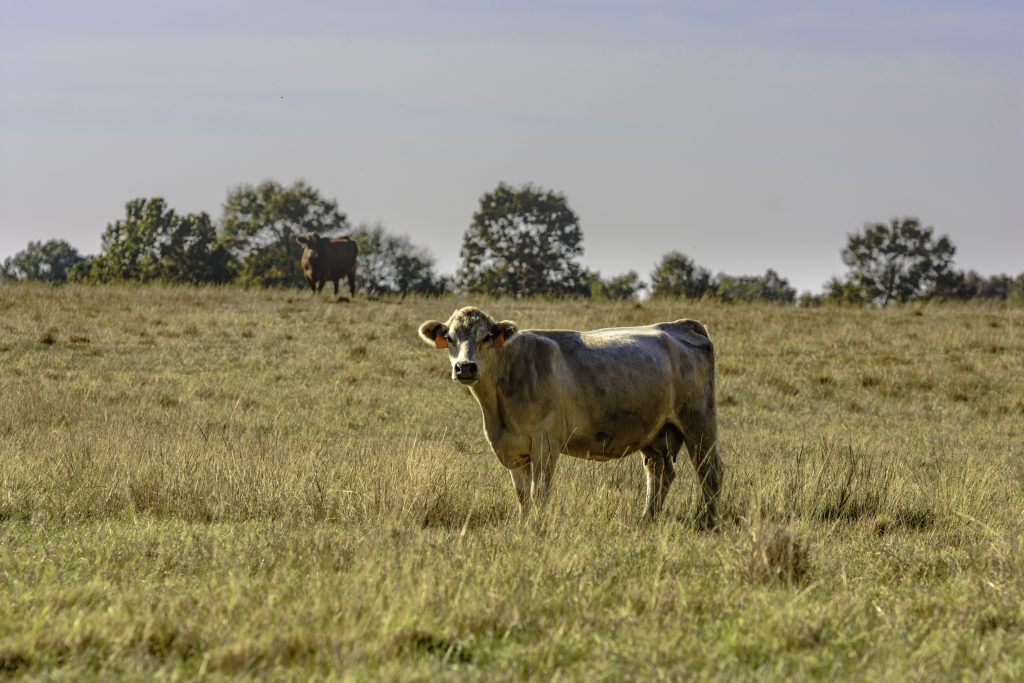
Senior Farm and Ranch Broadcaster, Ron Hays, is talking with Oklahoma State University Extension Livestock Marketing Specialist, Dr. Derrell Peel, about the state of the cow herd as it relates to forage availability.
As pasture and range ratings are not ideal from Nebraska through Texas, Peel said there is still a long way to go before improvements are seen.
“These four states now (Nebraska, Kansas, Oklahoma, and Texas), really are kind of the epicenter of the drought in the country,” Peel said. “From a national perspective, from January 1 until now, drought has diminished considerably in the country, but not in that region. Most of the remaining severe drought is in those four states.”
In Oklahoma, much of the state still suffers from all categories of drought, with over 50 percent in moderately dry or worse conditions. To see the latest Oklahoma drought numbers, click here.
Extremely poor pasture ratings, Peel said, means less forage availability.
“Nationwide, hay stocks were down about 13 percent, but if you look at those four states, we are down well below that in terms of a ten-year average or something,” Peel said. “The bottom line is forage remains very tight.”
Herd liquidation cannot end nationally, Peel said, until conditions improve in Nebraska, Kansas, Oklahoma and Texas.
“Those four states on January 1 of this year had 32 percent of the beef cows,” Peel said.
This year will be more of a stabilizing situation, Peel said, as better conditions can possibly be anticipated for 2024. As of now, Peel added, 2023 is not going to turn around so quickly.
“I think the national cow herd will continue to decline a little bit in 2023, and that will show up as an even lower number on January 1 of 2024,” Peel said.
It is not clear how quickly things are transitioning to better conditions this year, Peel said, but in any event, the forage deficit will leave the region with a small chance of rebuilding any time soon.
“From a longer-term perspective, we have been in enough drought long enough that those pastures take time to heal, and those pastures need time to recover,” Peel said.
In the short run, there have been some rains to help green up pastures, Peel said, but the growth isn’t anything substantial.
“That is indicative of the fact that we are in a fairly serious hole,” Peel said. “Even if the drought conditions sort of went away instantly, which doesn’t happen, but if they did, I think we are still talking about most of this year and very much in recovery mode and rehabilitation mode.”
Even if the drought conditions went away overnight, Peel said that because of the damaging effects of long-term dry conditions, it would not be a good idea to fully stock pastures with cattle immediately.
Peel also talked with Hays about the latest cattle on feed numbers. Click the listen bar above the story to hear the full conversation.
“In general, that report was very well anticipated,” Peel said.
The Beef Buzz is a regular feature heard on radio stations around the region on the Radio Oklahoma Ag Network and is a regular audio feature found on this website as well. Click on the LISTEN BAR for today’s show and check out our archives for older Beef Buzz shows covering the gamut of the beef cattle industry today.















